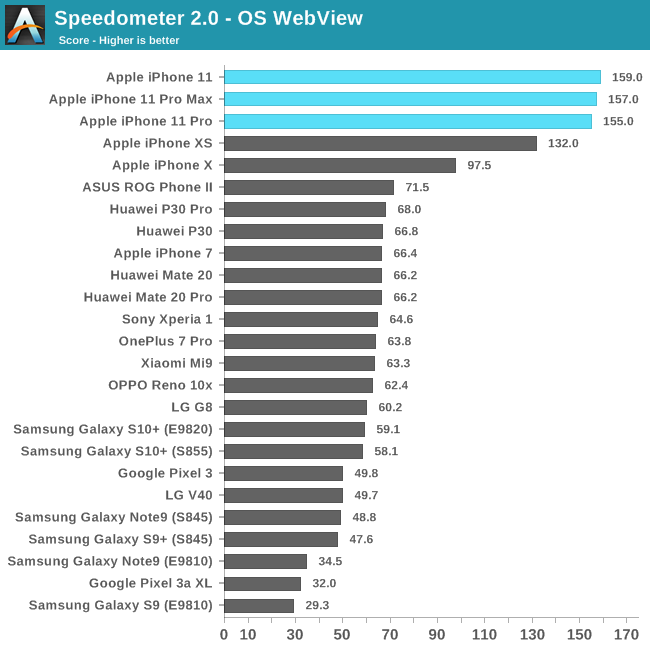Άλλη μια μεγάλη ανάλυση απο το Anandtech.
Overall, performance on the iPhone 11s is excellent, as we've come to expect time and time again from Apple. With that said, however, I can’t really say that I notice too much of a difference to the iPhone XS in daily usage. So while the A13 delivers class leading performance, it's probably not going to be very compelling for users coming from last year's A12 devices; the bigger impact will be felt coming from older devices. Otherwise, with this much horsepower I feel like the user experience would benefit significantly more from an option to accelerate application and system animations, or rather even just turn them off completely, in order to really feel the proper snappiness of the hardware

In the face of the relatively conservative changes of the Lightning cores (other than AMX), the new Thunder cores seem like an outright massive change for the A13 and a major divergence from Apple’s past efficiency core microarchitectures. In the face-off against a Cortex-A55 implementation such as on the Snapdragon 855, the new Thunder cores represent a 2.5-3x performance lead while at the same time using less than half the energy.
But the biggest surprises and largest performance increases were to be found in the A13's GPU. Where the new chip really shines and exceeds Apple’s own marketing claims is in the sustained performance and efficiency of the new GPU. Particularly the iPhone 11 Pro models were able to showcase much improved long-term performance results, all while keeping thermals in check. The short version of it is that Apple has been able to knock it out of the park, delivering performance increases that we hadn’t expected in what's essentially a mid-generation refresh on the chip manufacturing side of matters.

Τελευταία επεξεργασία από: nikosgnr, 16/10/2019 - 22:32



















